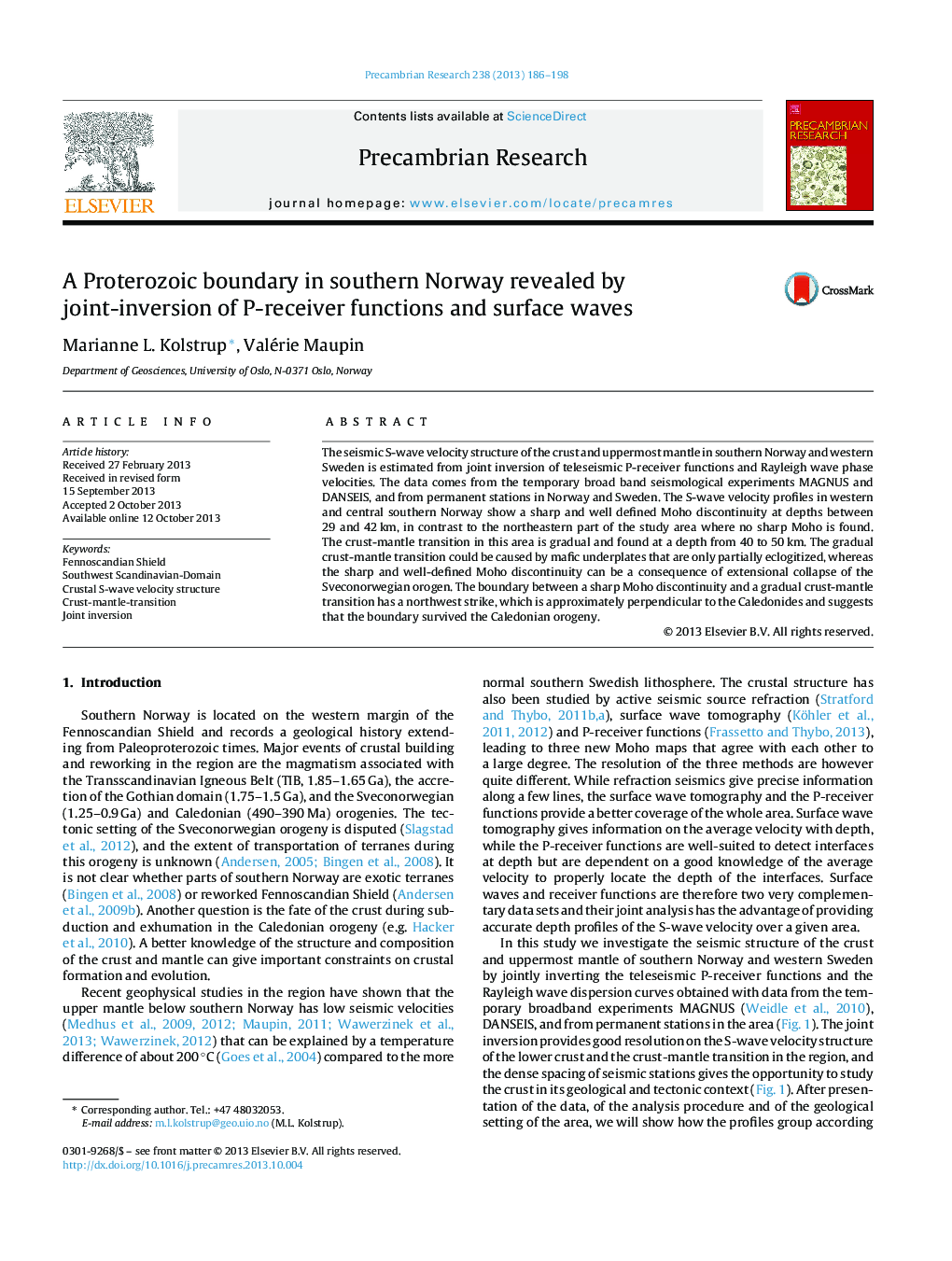| Article ID | Journal | Published Year | Pages | File Type |
|---|---|---|---|---|
| 4723198 | Precambrian Research | 2013 | 13 Pages |
•We present 42 crustal S-wave velocity profiles in southern Norway & western Sweden.•A sharp and well defined Moho discontinuity is found in the southwestern study area.•The crust-mantle transition in the northeastern part is gradual, at 40–50 km.•The boundary between the two areas has a strike perpendicular to the Caledonides.•It is suggested that this Proterozoic boundary survived the Caledonian Orogeny.
The seismic S-wave velocity structure of the crust and uppermost mantle in southern Norway and western Sweden is estimated from joint inversion of teleseismic P-receiver functions and Rayleigh wave phase velocities. The data comes from the temporary broad band seismological experiments MAGNUS and DANSEIS, and from permanent stations in Norway and Sweden. The S-wave velocity profiles in western and central southern Norway show a sharp and well defined Moho discontinuity at depths between 29 and 42 km, in contrast to the northeastern part of the study area where no sharp Moho is found. The crust-mantle transition in this area is gradual and found at a depth from 40 to 50 km. The gradual crust-mantle transition could be caused by mafic underplates that are only partially eclogitized, whereas the sharp and well-defined Moho discontinuity can be a consequence of extensional collapse of the Sveconorwegian orogen. The boundary between a sharp Moho discontinuity and a gradual crust-mantle transition has a northwest strike, which is approximately perpendicular to the Caledonides and suggests that the boundary survived the Caledonian orogeny.
